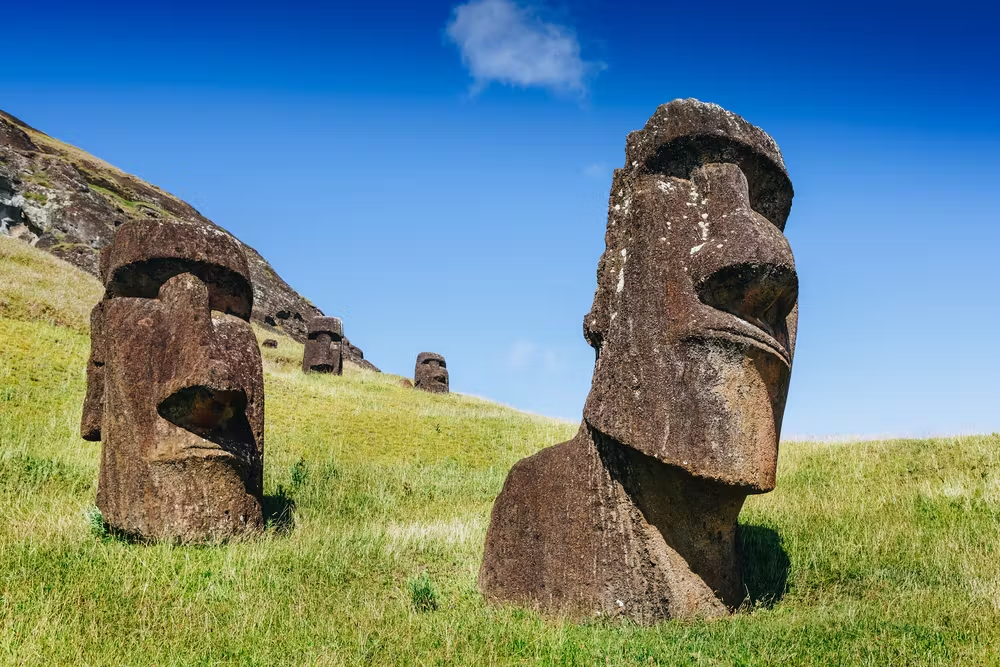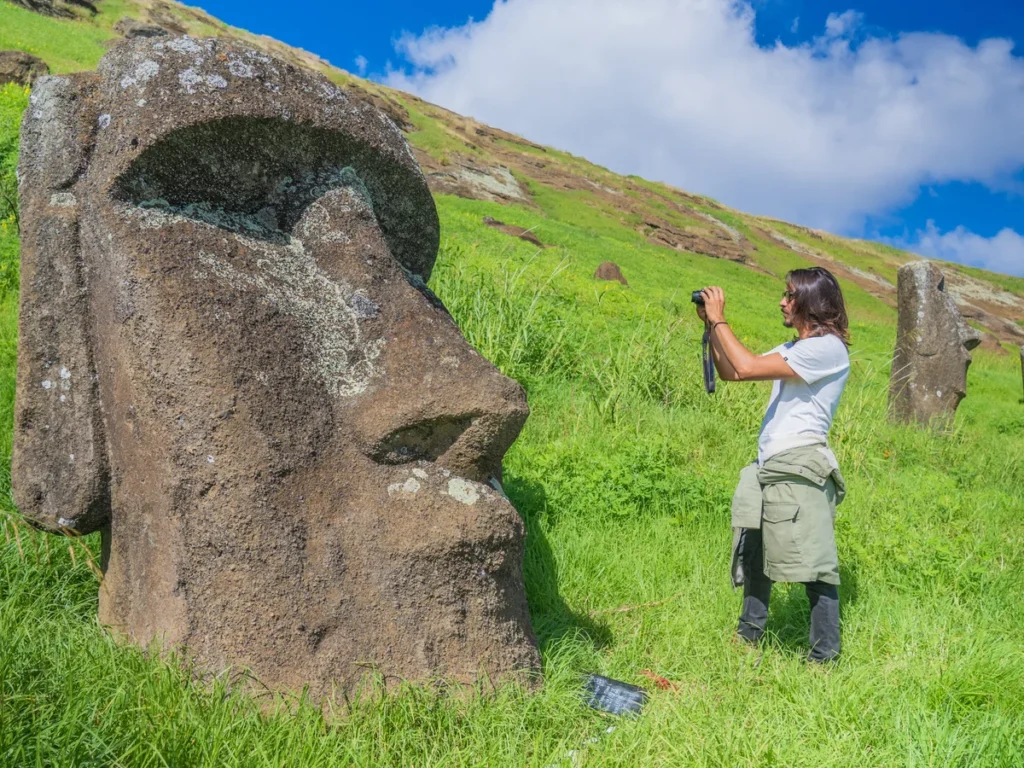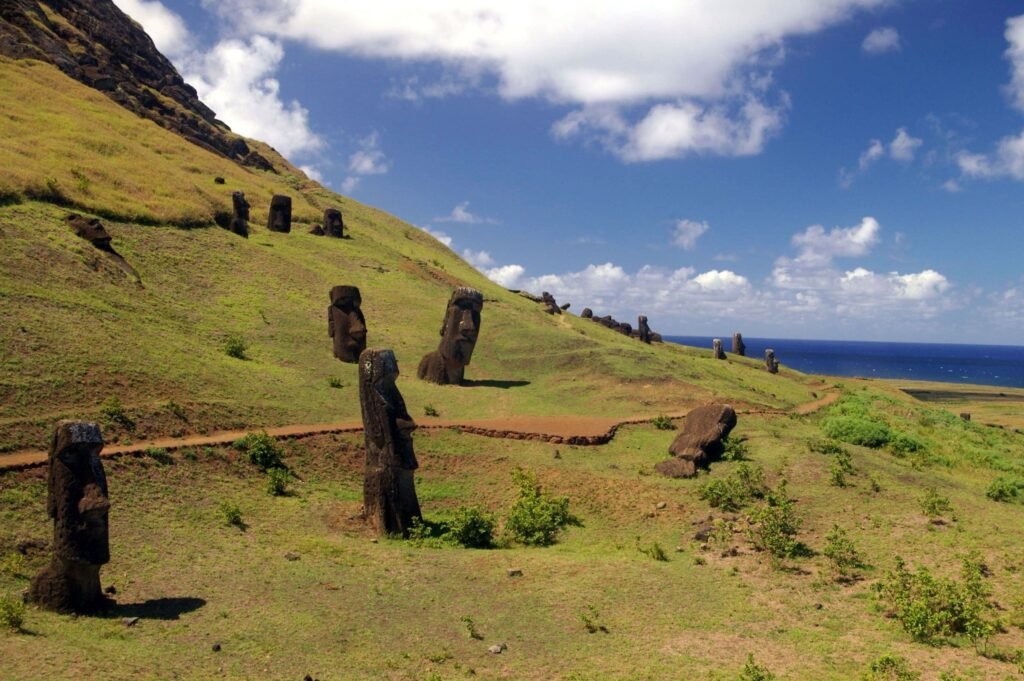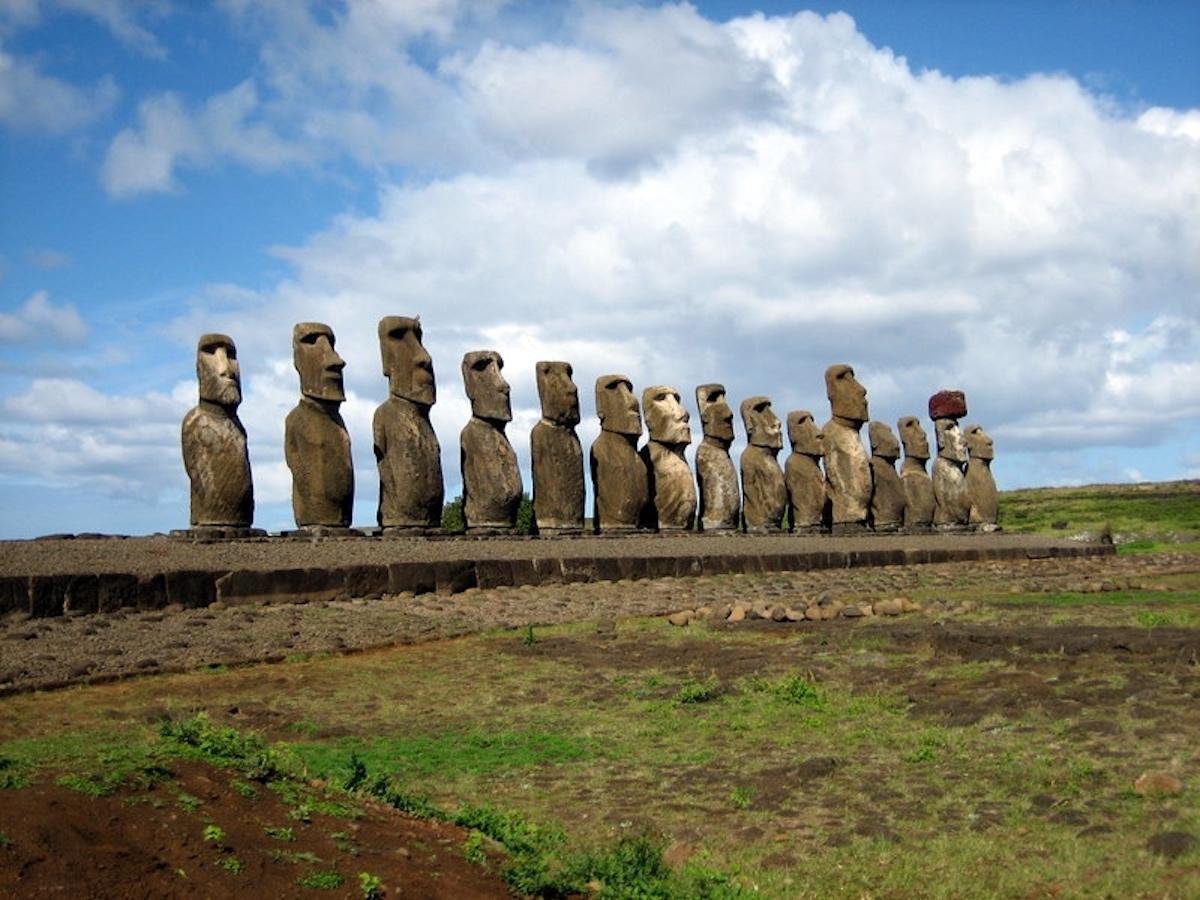The Fragile Future of Easter Island Moai Statues

Rapa Nui, known to the world as Easter Island, is home to the iconic moai statues—majestic stone figures carved by Polynesian ancestors to honor lineage and tradition. Yet, these once-mighty guardians of heritage are now at the brink of collapse. Erosion, intensified weather conditions, and human activity are accelerating their decay. The question now looms: can we save them before it’s too late?
A Landscape Shaped by the Legacy of Easter Island Moai Statues
Nestled in the Pacific Ocean, about 3,500km off Chile’s coast, Easter Island boasts nearly 1,000 moai statues scattered across its terrain. Most are carved from volcanic tuff, a porous and fragile rock that weathers quickly when exposed to wind, salt, and rain. Their expressions are stoic, yet their surfaces are cracked, pitted, and in many cases, crumbling.
These figures, some standing more than 10 meters tall, were shaped between 1100 and 1600 AD. Their creation required immense craftsmanship and communal effort. The quarry at Rano Raraku, an extinct volcano, still houses unfinished moai, frozen mid-journey from stone to symbol. Over centuries, many statues have been worn by the elements, toppled by conflict, or lost during transport.
Climate Change: A Modern-Day Threat to Easter Island Moai Statues
More than 90% of standing moai are located along the coast, making them especially vulnerable to rising sea levels, coastal erosion, and violent weather patterns. In recent years, sporadic yet intense rainfall has damaged foundations, while droughts have left vegetation unable to retain soil, exposing the ahu (ceremonial platforms) to further degradation.

A devastating wildfire in 2022 blackened dozens of statues, prompting fears that irreversible harm may become the norm. According to conservationists, these effects are not simply a matter of natural aging—they’re being accelerated by climate change.
Conservation Versus Cultural Philosophy
The debate over how best to preserve the moai reflects broader cultural and philosophical divisions. Some locals argue that the statues should return to the earth naturally, in keeping with the cycle of life and death. Others believe their preservation is a sacred duty, crucial not only for heritage but for the local economy, which relies heavily on tourism.
Efforts to restore and protect the moai are already underway. Local conservation group Ma’u Henua, which manages Rapa Nui National Park, is spearheading modern restoration strategies, from chemical stone treatments to 3D modeling. These technologies allow conservators to track changes over time and develop intervention plans with minimal disruption.
Global Aid and Local Expertise
International collaboration has become vital. Projects with organizations like CyArk and the University of Florence have provided technical expertise and funding. Drones, laser scanning, and non-invasive imaging are helping document and stabilize the most endangered sites. In 2023, Unesco allocated nearly $100,000 to support conservation planning and damage repair on fire-damaged moai.
Despite these advances, funding remains scarce. Import taxes on specialized chemicals and equipment challenge local efforts. While five moai are currently undergoing restoration, dozens more wait in peril, with limited resources to help them.
Building a Blueprint for Preservation
A key initiative by Ma’u Henua involves using the restoration of five specific moai as a prototype for island-wide conservation. By streamlining approval processes and creating standard treatment protocols, the group aims to make future preservation efforts more efficient.
Meanwhile, locals like Maria Tuki continue to honor their ancestors by sharing stories and preserving traditions. Some of her father’s sculptures now stand in cities across Chile, Japan, and Spain—new representations of an old culture still alive.
Museums: Protection or Displacement?

The idea of relocating moai to museums divides opinion. On one hand, a controlled environment offers superior protection from natural degradation. A new museum on Rapa Nui may provide such shelter. On the other, many locals believe the statues belong on the island, not behind glass. Disputes about statues held overseas, like the Hoa Hakananai’a in the British Museum, reflect this tension between conservation and cultural sovereignty.
A Living Tradition, Not a Frozen Relic
Conservation isn’t only about preservation—it’s about continuation. Ma’u Henua plans to train a new generation in traditional carving techniques, ensuring that Rapa Nui’s artistic heritage endures. New moai, inspired by ancient ones, are already being created and displayed, reinforcing the cultural identity of the island’s people.
A Call to Action
Whether through international cooperation, technological innovation, or indigenous leadership, saving the moai demands urgent and united action. Their loss would be more than physical—it would be a fading of memory, artistry, and identity.
The moai aren’t just stones; they’re silent witnesses to a civilization’s rise, resilience, and revival. The future of Easter Island’s moai is uncertain—but with care and commitment, their story doesn’t have to end.




